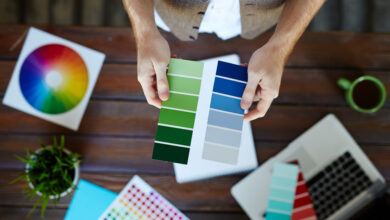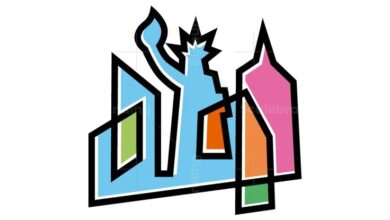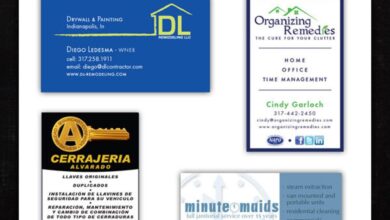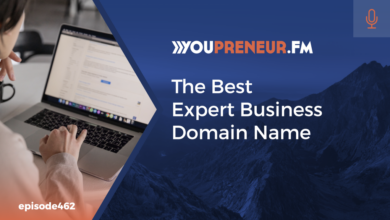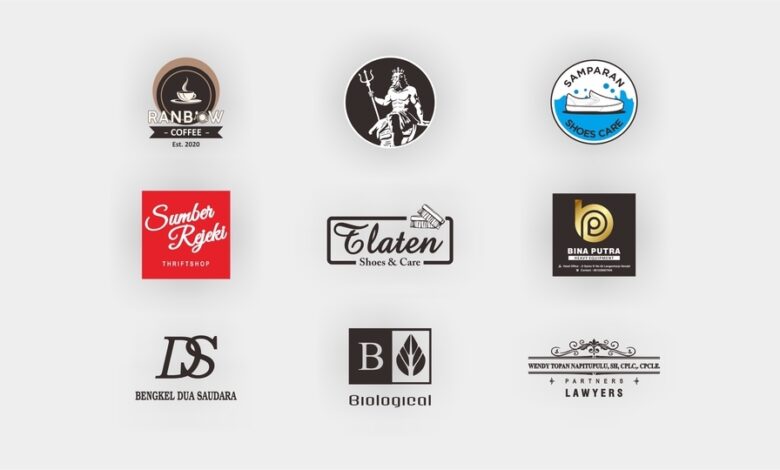
Our Creative and Professional Graphic Logo Design Service
Our creative and professional graphic logo design service is more than just creating a pretty picture; it’s about crafting a visual identity that resonates deeply with your brand and captivates your audience. We delve into the heart of your business, understanding your vision, your target market, and the message you want to convey. This isn’t just about a logo; it’s about building a lasting impression.
From initial consultations where we meticulously gather information about your brand and aspirations, to the final delivery of polished, high-resolution files, we guide you through every step of the process. We explore diverse design styles, experiment with color palettes that evoke the right emotions, and select typography that perfectly complements your brand’s personality. The result? A logo that’s not just visually stunning but also strategically effective.
Understanding Client Needs
Building a truly effective logo requires a deep understanding of the client’s vision and their target market. This isn’t about simply creating a pretty picture; it’s about crafting a visual representation that encapsulates their brand identity and resonates with their audience. The process of gathering this information is crucial and forms the foundation of a successful logo design project.Effective communication is key to bridging the gap between the client’s aspirations and the designer’s creative execution.
Understanding the client’s needs involves a multi-faceted approach, encompassing detailed interviews, insightful questionnaires, and careful analysis of existing branding materials. This collaborative process ensures the final logo accurately reflects the client’s brand, leading to a mutually satisfying outcome.
Client Interview Techniques
Conducting effective client interviews is paramount to understanding their brand. Structured interviews, incorporating open-ended questions, allow for in-depth exploration of their business, values, and aspirations. These interviews should be recorded (with the client’s permission) to ensure accuracy and avoid misinterpretations. Different interview styles can be employed depending on the client’s personality and communication style. For instance, a more informal, conversational approach might work better with some clients, while a structured interview with pre-determined questions might be more effective with others.
The goal is to create a comfortable environment where the client feels free to share their ideas and insights.
Translating Client Feedback into Design Elements, Our creative and professional graphic logo design service
Client feedback is invaluable, but it needs to be interpreted correctly. Directly translating every suggestion might not always result in a cohesive and effective design. The designer’s role is to synthesize the client’s feedback, identifying core themes and translating abstract concepts into concrete visual elements. For example, if a client describes their brand as “modern and sophisticated,” the designer might incorporate clean lines, a minimalist color palette, and a refined typeface.
Conversely, a client describing their brand as “playful and energetic” might inspire the use of bold colors, dynamic shapes, and a more unconventional font. The key is to find a balance between client input and the designer’s creative expertise.
Effective Questionnaires for Gathering Client Requirements
A well-structured questionnaire can be a powerful tool for gathering comprehensive information before the initial interview. This allows the designer to come prepared with targeted questions and ensures no crucial details are overlooked. The questionnaire should cover various aspects of the client’s brand, including their company history, target audience, competitors, and brand personality. Here’s an example of questions that could be included:
- Describe your company’s mission and values.
- Who is your target audience (demographics, psychographics, lifestyle)?
- What are your brand’s key differentiators?
- What are your competitors doing, and how do you want to differentiate yourself visually?
- Describe your ideal brand personality (e.g., professional, playful, innovative).
- Do you have any existing branding guidelines (color palettes, fonts, imagery)?
- What are your expectations for the logo design process and timeline?
- What is your budget for this project?
This questionnaire provides a structured framework for gathering essential information, allowing for a more focused and efficient initial meeting with the client. Remember to tailor the questionnaire to each client’s specific needs and industry. For example, a tech startup’s questionnaire will differ significantly from that of a traditional law firm.
Conceptualization and Sketching
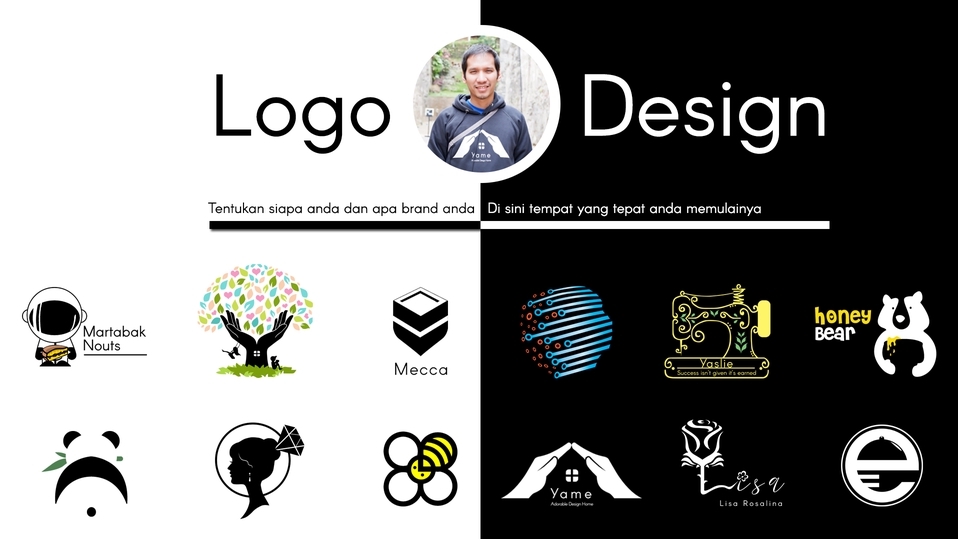
Source: fastwork.co
The magic of logo design truly begins with the conceptualization and sketching phase. This isn’t just about drawing; it’s about translating a client’s vision and brand essence into compelling visual representations. This stage is crucial for exploring diverse ideas and laying the foundation for a successful logo. A well-executed conceptualization process ensures the final design effectively communicates the brand’s identity and resonates with its target audience.
This process involves a structured approach to brainstorming, sketching, and refining ideas, ensuring a wide range of possibilities are explored before settling on a final direction. We’ll delve into the specifics of this creative journey, outlining the steps involved and providing insights into various sketching techniques and design styles.
So you’ve got a killer brand, and we’ve helped craft the perfect logo for it with our creative and professional graphic logo design service. But to really get your message out there, you need a strong online presence, which is why understanding how to leverage YouTube is crucial. Check out our guide on getting it on with youtube to boost your visibility.
Then, let’s get back to making your brand even more unforgettable with a logo that truly pops!
Brainstorming and Developing Initial Logo Concepts
Effective brainstorming is the cornerstone of this process. It involves a systematic approach to generating a multitude of ideas, moving beyond the obvious and exploring unconventional concepts. This often starts with a thorough understanding of the client’s brand, their target audience, and their competitors. We encourage clients to participate actively in this stage, contributing their thoughts and perspectives.
This collaborative approach leads to richer and more relevant logo concepts. We typically use mind mapping techniques, lists, and mood boards to visually represent the brand’s essence and spark creative ideas. We then prioritize the most promising concepts based on their relevance, originality, and potential for effective communication.
Sketching Techniques for Generating Logo Ideas
Sketching is a vital tool for translating abstract ideas into tangible visual forms. Different sketching techniques serve different purposes. Loose, quick sketches are ideal for generating a large volume of initial concepts, focusing on overall form and composition. More refined sketches allow for detailed exploration of specific elements, such as typography and iconography. We utilize a variety of tools, from simple pencils and pens to digital drawing tablets, to achieve different levels of detail and explore various design styles.
For instance, a rough sketch might focus on the overall shape and feel, while a more refined sketch will focus on the details of the typography and any illustrative elements. This iterative process allows us to gradually refine the design, incorporating feedback and making adjustments along the way.
Exploring Different Design Styles
Logo design styles are incredibly diverse, ranging from minimalist and modern to vintage and ornate. Understanding these styles and their suitability for different brands is essential. A minimalist logo might consist of a simple geometric shape or a single, powerful icon, ideal for conveying clarity and sophistication. A modern logo might incorporate bold typography and contemporary imagery, reflecting innovation and forward-thinking.
A vintage logo, on the other hand, might utilize distressed textures and classic typography, evoking nostalgia and tradition. The choice of style is directly influenced by the client’s brand identity, target audience, and industry. Our goal is to select a style that authentically reflects the brand’s personality and resonates with its intended audience.
Comparison of Logo Design Styles
| Style | Description | Industry Examples | Suitability |
|---|---|---|---|
| Minimalist | Simple, clean, and uncluttered design; often uses geometric shapes or a single icon. | Technology startups, high-end fashion brands | Suitable for brands seeking a sophisticated and timeless image; best for brands with a clear and concise message. |
| Modern | Clean lines, bold typography, and contemporary imagery; often incorporates geometric shapes and vibrant colors. | Tech companies, design agencies | Suitable for brands that want to project innovation, dynamism, and a forward-thinking approach. |
| Vintage | Uses distressed textures, classic typography, and retro imagery; evokes nostalgia and tradition. | Craft breweries, coffee shops, antique stores | Suitable for brands seeking to establish a sense of heritage, authenticity, and timelessness. |
| Ornate | Intricate details, elaborate designs, and decorative elements; often uses flourishes and embellishments. | Luxury brands, high-end hotels | Suitable for brands that want to convey luxury, sophistication, and a sense of grandeur. |
Logo Refinement and Digitalization
Taking your hand-drawn sketches and transforming them into polished, professional logos is where the magic truly happens. This stage involves a meticulous process of refinement, ensuring the final product is not only visually appealing but also technically sound and adaptable to various applications. It’s about taking the core concept and giving it the precision and detail it needs to shine.The refinement process begins by carefully scanning or photographing the chosen sketches at high resolution.
This ensures the digital version retains the nuances of the original artwork. Then, the real work begins in vector graphics software.
Vector Graphics Software and Scalability
Vector graphics software, such as Adobe Illustrator or Affinity Designer, is crucial for creating logos. Unlike raster images (like JPEGs), which are made up of pixels, vector graphics are based on mathematical equations that define lines, curves, and shapes. This means the logo can be scaled to any size without losing quality – essential for everything from business cards to billboards.
The software allows for precise adjustments to lines, curves, and colors, enabling us to perfect the logo’s details and ensure consistency across different applications. We use tools like the pen tool, shape tools, and pathfinders to manipulate the vector shapes, creating clean, crisp lines and ensuring perfect alignment. The ability to adjust individual elements without affecting others is critical for this stage.
Logo Optimization for Various Applications
A well-designed logo should look great everywhere. Therefore, we optimize the logo for various applications, ensuring it’s suitable for websites (considering both screen size and resolution), print materials (considering CMYK color mode and resolution for print), and social media platforms (considering their respective image size requirements and aspect ratios). This involves creating different versions of the logo – for example, a smaller, simplified version for social media profile pictures and a larger, more detailed version for print collateral.
We also consider the color palettes used in different contexts, ensuring consistency and readability. For instance, a logo might appear differently on a dark background than on a light background, requiring us to create variations to maintain visual clarity.
Logo Variations: The “Mountain Peak” Concept
Let’s say our initial concept is a stylized mountain peak representing ambition and achievement. This forms the core of our design, a simple, yet powerful image.
Here are three variations based on this concept:
- Variation 1: A minimalist, single-color silhouette of a mountain peak. This version is clean and modern, ideal for use as a watermark or small icon. The color would be a deep, rich blue, evoking a sense of stability and trust.
- Variation 2: A more detailed version featuring a gradient of colors transitioning from a dark base to a lighter peak, suggesting growth and progress. This adds depth and visual interest, suitable for larger applications like letterheads or brochures. The color gradient could range from deep blues at the base to bright, almost white, at the peak.
- Variation 3: A bolder version, incorporating a stylized sun or star above the peak, symbolizing success and aspiration. This version is more dynamic and eye-catching, suitable for applications where a stronger visual impact is desired. The star could be a simple geometric shape, or a more complex, detailed illustration, depending on the overall style desired.
Color Palette and Typography
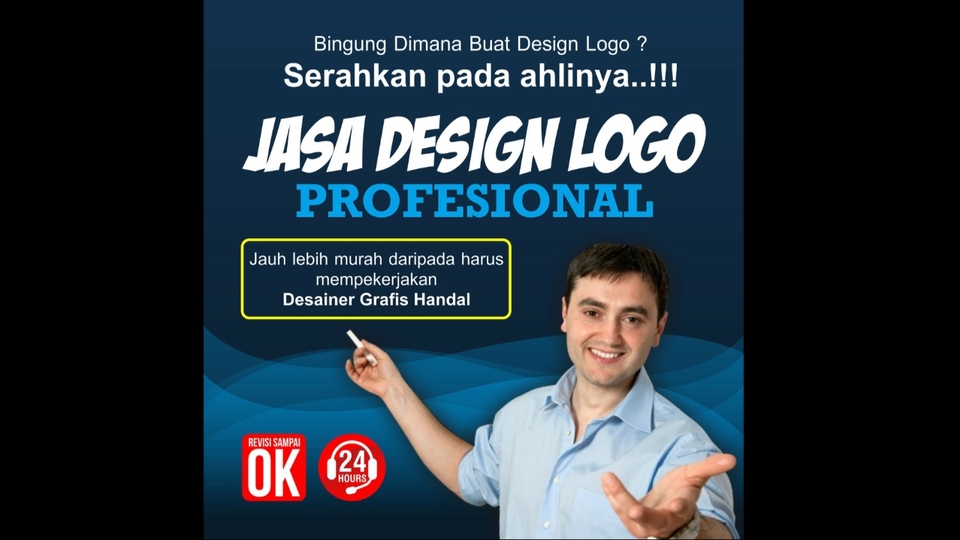
Source: fastwork.co
Choosing the right colors and typography is crucial for a successful logo design. These elements work together to create a visual identity that’s memorable, impactful, and perfectly aligned with your brand’s personality and target audience. Getting this right can significantly influence how your brand is perceived and remembered.
Color Psychology and Brand Perception
Color psychology plays a vital role in logo design. Different colors evoke different emotions and associations. Understanding this is key to selecting a palette that effectively communicates your brand message. For instance, blue often conveys trust and stability, making it popular for financial institutions. Red, on the other hand, is associated with energy and excitement, often used by fast-food chains or sports brands.
Green suggests nature and health, while yellow represents optimism and joy. Careful consideration of these associations ensures the logo resonates with the intended audience and reinforces the brand’s core values. A poorly chosen color palette can misrepresent the brand, creating confusion or even negative associations.
Examples of Effective Color Palettes
Let’s look at some examples. Coca-Cola’s iconic red instantly evokes feelings of happiness and energy, aligning perfectly with its brand. Tiffany & Co.’s signature robin’s egg blue projects luxury, elegance, and sophistication. The minimalist, earthy tones used by Patagonia reflect their commitment to environmental sustainability. These brands demonstrate the power of strategically chosen colors to reinforce their brand identity and resonate with their target audiences.
Each color choice is not arbitrary; it’s a deliberate decision reflecting the brand’s personality and values.
Typography Selection and Logo Aesthetics
Typography is equally important. The font style significantly impacts the logo’s overall aesthetic and readability. The chosen typeface should complement the logo’s design, reflecting the brand’s personality. A modern, minimalist logo might pair well with a clean sans-serif font, while a more traditional logo might suit a classic serif typeface. The font’s weight, size, and kerning (spacing between letters) should all be carefully considered to ensure optimal legibility and visual appeal.
Inconsistent or poorly chosen typography can detract from the logo’s overall impact.
Impact of Different Font Pairings
The interplay between different fonts can significantly enhance or detract from a logo’s visual appeal. Here’s a table illustrating this:
| Font Pair | Description | Brand Example (Illustrative) | Visual Impact |
|---|---|---|---|
| Montserrat (Sans-serif) & Playfair Display (Serif) | Combines a clean, modern sans-serif with an elegant, classic serif. | A hypothetical high-end coffee shop | Sophisticated, balanced, and easily readable. |
| Open Sans (Sans-serif) & Roboto (Sans-serif) | Two modern sans-serif fonts with slightly different weights and styles. | A tech startup | Clean, modern, and consistent. |
| Oswald (Sans-serif) & Pacifico (Script) | A bold sans-serif paired with a playful script font. | A bakery or ice cream parlor | Fun, approachable, and slightly informal. |
| Times New Roman (Serif) & Arial (Sans-serif) | A classic serif paired with a common sans-serif. (Less ideal pairing) | (Generally avoided in modern logo design) | Can appear dated and clashing; lacks visual cohesion. |
Presentation and Client Feedback
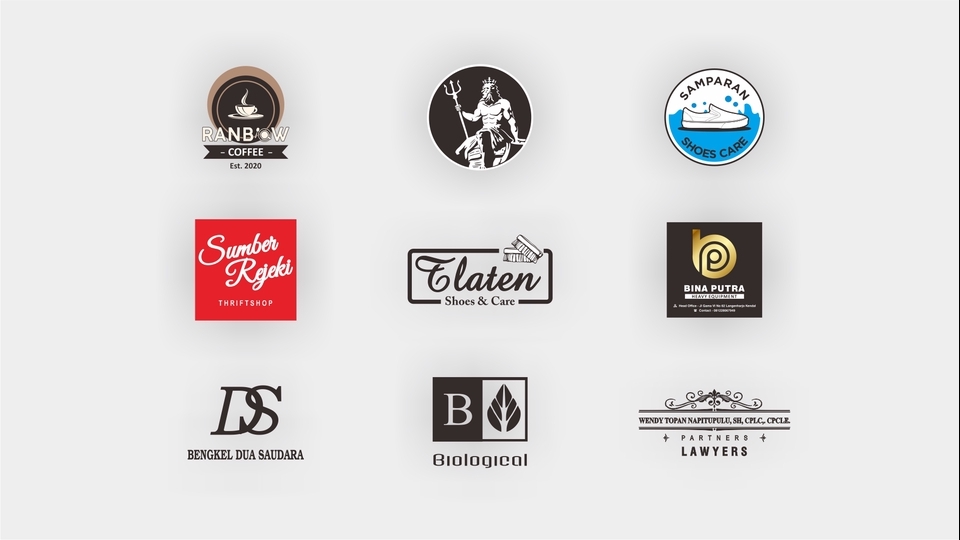
Source: fastwork.co
Presenting your logo design isn’t just about showcasing the final product; it’s about telling a compelling story of the design process and building a strong client relationship. A well-structured presentation fosters trust and ensures the client feels valued and understood throughout the journey. This is crucial for securing approval and establishing a positive working relationship.
The key to a successful presentation lies in a clear, concise, and visually engaging delivery. Avoid overwhelming the client with technical jargon; focus on communicating the design’s impact and how it achieves the client’s objectives. Active listening and incorporating feedback are vital to building consensus and ensuring the final logo perfectly reflects the client’s vision.
Creating a Professional Presentation
A professional logo presentation should be more than just a slide show of the final logo. It needs to narrate the design journey, highlighting the creative process and the rationale behind key decisions. Begin with a brief overview of the project’s goals and the client’s brief. Then, chronologically showcase the evolution of the design: from initial concepts and sketches to the refined digital version.
Use high-quality visuals, minimal text, and a consistent brand throughout the presentation. Consider using a clean, modern template and incorporating animations or transitions to maintain engagement. A strong narrative, woven throughout the presentation, keeps the client invested and informed. For example, you might show a series of mood boards and explain how they influenced the final color palette.
Another slide could showcase different typography options and explain the reasoning behind the chosen font.
Communicating Design Rationale and Creative Choices
Effectively communicating your design choices involves clearly articulating the “why” behind each decision. Don’t just present the final product; explain the thought process that led to it. For example, if you chose a specific color palette, explain how those colors relate to the brand’s personality and target audience. If you selected a particular font, describe its readability, suitability for different applications, and how it aligns with the brand’s overall aesthetic.
Using visual aids, like comparative examples of different design options and explaining why certain options were rejected, can be highly effective. Frame your explanations in terms of how the design addresses the client’s needs and goals.
Incorporating Client Feedback
Client feedback is invaluable. Establish a clear process for gathering and responding to feedback early in the design process and throughout. Encourage open communication and actively listen to their concerns and suggestions. Not all feedback will be constructive, so be prepared to diplomatically guide the client towards design solutions that align with best practices and the project’s goals.
For example, if a client suggests a font that is highly illegible, gently explain the limitations and offer alternatives that achieve a similar aesthetic while maintaining readability. Document all feedback and your responses, ensuring transparency and accountability. Revise the design based on constructive criticism, always maintaining a professional and collaborative approach.
Mock Client Presentation
This presentation focuses on a fictional client, “Eco Solutions,” a company specializing in sustainable energy. The presentation begins with a recap of their brief: to create a logo that conveys trustworthiness, innovation, and environmental consciousness. The presentation then moves through the design process, showing initial sketches that explore different visual metaphors for sustainable energy (e.g., a stylized leaf, a sun, flowing water).
The next section displays refined concepts, showing how the initial ideas were developed and iterated upon. The presentation would then showcase the final logo: a stylized sun with leaves subtly integrated into its rays, using a calming green and a dependable blue. The font choice is a clean, modern sans-serif that communicates both approachability and professionalism. The presentation concludes with a summary of the logo’s key elements and how they reflect Eco Solutions’ brand values, followed by a Q&A session with the client.
File Preparation and Delivery: Our Creative And Professional Graphic Logo Design Service
Getting your client the perfect logo is only half the battle. The other half involves delivering the files in a way that’s both professional and practical, ensuring they can use their new branding across all platforms. This final step is crucial for client satisfaction and reflects the overall quality of our service. Proper file preparation and delivery demonstrates attention to detail and professionalism, leaving a lasting positive impression.The process of preparing logo files for various applications requires understanding the strengths and limitations of different file formats.
Different formats are ideal for different uses, and providing a range ensures the client has the flexibility they need. We also need to consider providing clear guidelines to prevent misuse and maintain brand consistency.
Logo File Formats and Their Uses
Providing clients with a variety of file formats ensures they can use their logo effectively across different applications. Each format serves a specific purpose, optimizing the logo’s appearance and functionality in various contexts.
- AI (Adobe Illustrator): This vector format is ideal for scalability. It maintains crispness even when enlarged significantly, making it perfect for large-format printing like billboards or banners. It’s also easily editable, allowing for future modifications.
- EPS (Encapsulated PostScript): Similar to AI, EPS is a vector format offering high scalability and editability. It’s a widely compatible format across various design software.
- PNG (Portable Network Graphics): A raster format supporting transparency, PNG is excellent for web use, particularly for logos with transparent backgrounds. It provides high-quality images without significant file size increases.
- JPG (JPEG): A common raster format, JPG is suitable for web use and print when high transparency isn’t required. It’s a good option for smaller images and generally results in smaller file sizes compared to PNG.
- SVG (Scalable Vector Graphics): A web-friendly vector format, SVG is increasingly popular for its scalability and compatibility with various browsers. It’s ideal for logos used online, especially responsive websites.
Creating a Comprehensive Brand Guide
A brand guide is more than just a document; it’s a comprehensive resource that ensures consistent brand application. It acts as a visual and written reference, guiding the client on appropriate logo usage, color palettes, typography, and other brand elements. A well-structured guide prevents misuse and maintains the integrity of the logo design.
File Organization and Delivery
Efficient file organization streamlines the delivery process and ensures clients can easily locate the files they need. A well-organized package not only reflects professionalism but also enhances the client experience.
- Create a clearly labeled folder: Use the client’s name or project name as the folder’s name.
- Organize files within the folder: Create subfolders for different file types (e.g., Vector Files, Raster Files, Brand Guide). This prevents confusion and makes it easy to locate specific files.
- Name files clearly and consistently: Use descriptive names, such as “Logo_Primary_RGB.ai” or “Logo_Secondary_CMYK.eps”.
- Compress files (if necessary): Use a compression tool like WinRAR or 7-Zip to reduce file sizes, making it easier for clients to download and manage the files. Consider using a cloud-based file sharing service for larger files.
- Provide clear instructions: Include a simple text file with instructions on how to use the files and the brand guide.
Last Recap
Ultimately, our goal with our creative and professional graphic logo design service is to empower your brand. We believe a well-designed logo is an investment, a cornerstone of your visual identity that will help you stand out from the competition and leave a lasting impression on your customers. It’s about more than just a logo – it’s about building a brand story that resonates.
Let us help you tell yours.
Clarifying Questions
What file formats will I receive?
You’ll receive your logo in a variety of formats including AI, EPS, PNG, JPG, and SVG to ensure compatibility with all your needs, from web use to print.
How long does the design process take?
The timeline varies depending on the project’s complexity, but we aim for efficient turnaround times while maintaining high-quality design.
What if I’m not happy with the initial designs?
We offer revisions to ensure your complete satisfaction. We work collaboratively until we achieve a logo you love.
Do you offer brand guideline creation?
Yes, we can create a comprehensive brand guide to ensure consistent use of your logo across all platforms.

